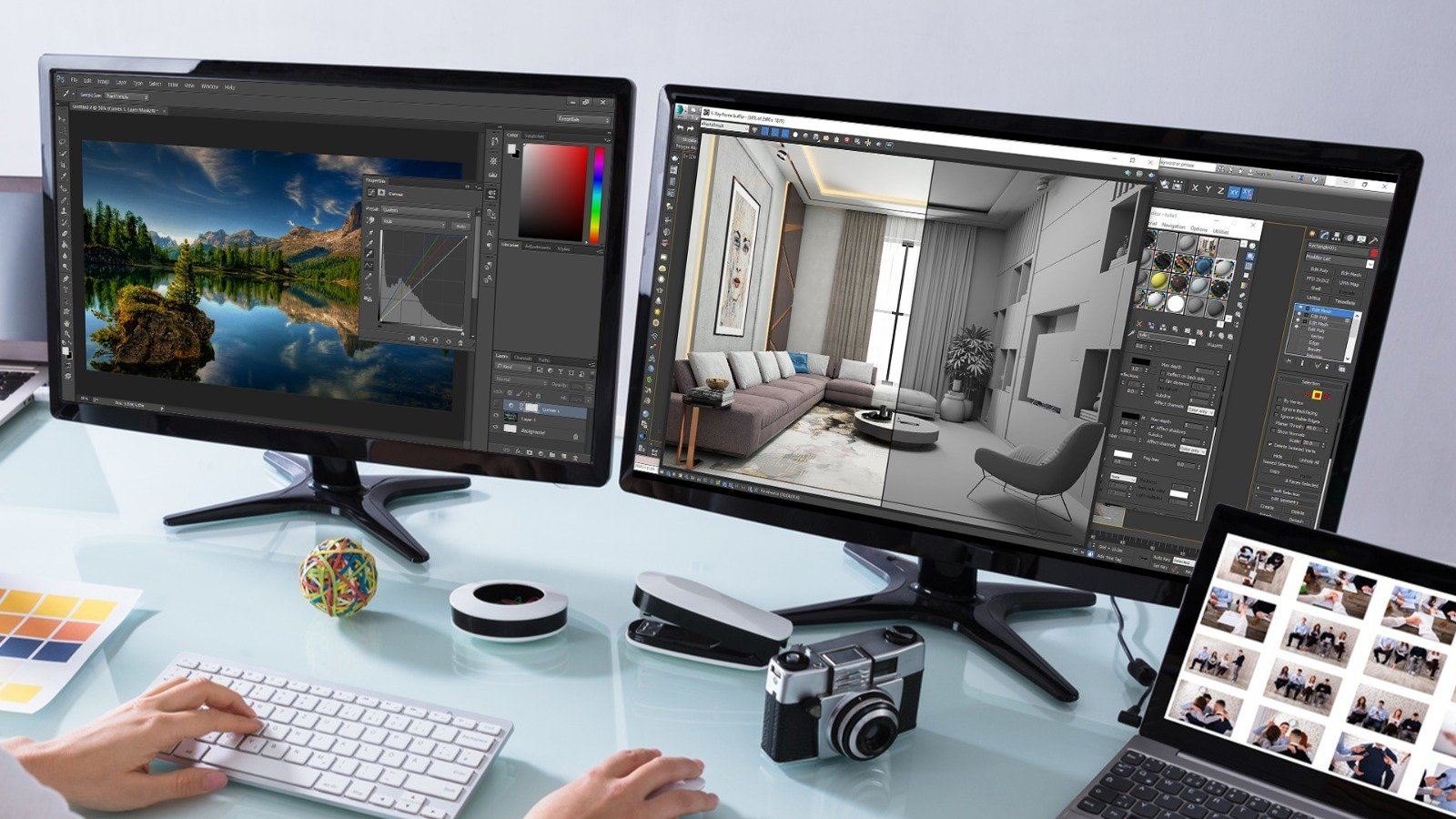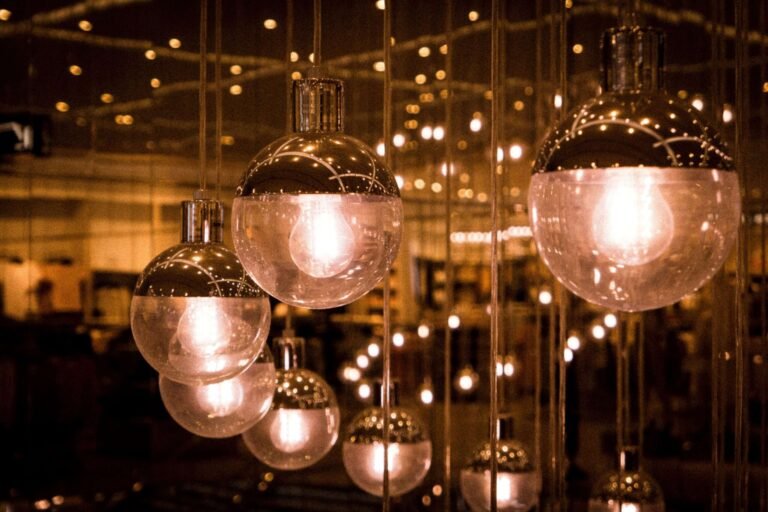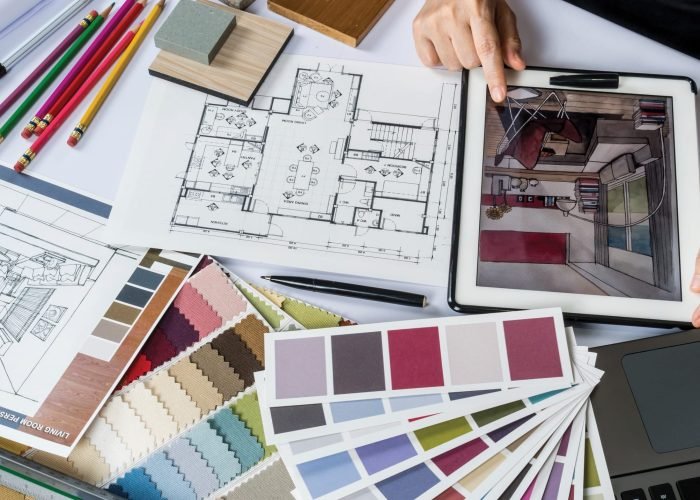In today’s visually driven world, interior design and graphic design are more intertwined than ever before. Both disciplines play pivotal roles in shaping how we experience and interact with our environments. While interior design focuses on the arrangement and aesthetics of physical spaces, graphic design brings visual communication and identity to these spaces. Together, they create cohesive and compelling experiences that resonate with users on multiple levels.
Understanding the Basics
Interior Design: This field involves the art and science of enhancing the interior of a building to achieve a healthier and more aesthetically pleasing environment. Interior designers work on spatial planning, color schemes, furniture, lighting, and other elements to create functional and beautiful spaces.
Graphic Design: Graphic design is the practice of creating visual content to communicate messages. It encompasses everything from typography and imagery to layout and color theory. Graphic designers use these elements to convey information, create brand identities, and influence perceptions.
Synergy Between Interior and Graphic Design
Retail Spaces: Stores like Apple and Nike use graphic design to enhance their interior environments. Apple’s minimalist approach is mirrored in its store layouts, where graphic design elements are carefully chosen to reinforce its sleek, modern image. Nike’s flagship stores often feature dynamic murals and interactive displays that reflect the brand’s energetic and innovative spirit.
Corporate Offices: In creative workplaces, such as those at Google or Adobe, the synergy between interior and graphic design is evident. These companies use vibrant graphics and artistic installations to create stimulating work environments that foster creativity and collaboration, seamlessly integrating branding elements with functional design.
The collaboration between interior design and graphic design is essential in crafting environments that are not only functional but also visually engaging and brand relevant. By leveraging the strengths of both disciplines, designers can create spaces that are both aesthetically pleasing and effective in communicating messages, enhancing user experiences, and reflecting brand identities. As technology and design trends continue to evolve, the interplay between these fields will likely become even more integral to creating dynamic and immersive environments.
Brand Identity and Atmosphere:
- Brand Integration: For commercial spaces like offices, retail stores, and restaurants, graphic design is crucial in reinforcing the brand’s identity. Logos, color schemes, and brand messaging can be integrated into the interior design through wall art, signage, and decorative elements, ensuring a consistent brand experience.
- Cohesive Aesthetics: Interior designers often collaborate with graphic designers to develop visual themes that reflect the brand’s ethos. This might include customized wallpaper, murals, or branded furnishings that contribute to a unified aesthetic.
- Spatial Communication:
- Wayfinding Systems: Graphic design elements such as signage and infographics play a key role in helping people navigate through spaces. In interior design, clear and visually appealing wayfinding systems improve user experience by providing intuitive direction and information.
- Visual Hierarchy: Both disciplines use principles of visual hierarchy to guide attention and create focal points. For instance, a striking graphic mural in a lobby can draw attention and set the tone for the space, while the arrangement of furniture and lighting enhances the overall ambiance.
- Emotional Impact and Experience:
- Mood Creation: Interior design sets the mood of space through color, texture, and layout. Graphic design complements this by adding visual elements that evoke specific emotions or themes, such as calming graphics in a spa or dynamic artwork in a creative office.
- Interactive Elements: Modern interior spaces often incorporate interactive elements such as digital displays and touchscreens. Graphic designers contribute by designing engaging interfaces and content that enhance the user’s experience within the physical environment.
- Technology and Innovation:
- Digital Integration: With technological advancements, interior and graphic design overlap. Digital installations, such as interactive walls or projection mapping, merge graphic design with spatial design, creating immersive environments that adapt to user interaction.
- Sustainable Design: Both fields are embracing sustainable practices. Graphic designers create eco-friendly materials and processes, while interior designers incorporate these innovations into their spaces, such as using recycled materials for graphic elements or designing energy-efficient lighting that complements the graphics.
Case Studies and Examples
Retail Spaces: Stores like Apple and Nike use graphic design to enhance their interior environments. Apple’s minimalist approach is mirrored in its store layouts, where graphic design elements are carefully chosen to reinforce its sleek, modern image. Nike’s flagship stores often feature dynamic murals and interactive displays that reflect the brand’s energetic and innovative spirit.
Corporate Offices: In creative workplaces, such as those at Google or Adobe, the synergy between interior and graphic design is evident. These companies use vibrant graphics and artistic installations to create stimulating work environments that foster creativity and collaboration, seamlessly integrating branding elements with functional design.
The collaboration between interior design and graphic design is essential in crafting environments that are not only functional but also visually engaging and brand relevant. By leveraging the strengths of both disciplines, designers can create spaces that are both aesthetically pleasing and effective in communicating messages, enhancing user experiences, and reflecting brand identities. As technology and design trends continue to evolve, the interplay between these fields will likely become even more integral to creating dynamic and immersive environments.
Brand Identity and Atmosphere:
- Brand Integration: For commercial spaces like offices, retail stores, and restaurants, graphic design is crucial in reinforcing the brand’s identity. Logos, color schemes, and brand messaging can be integrated into the interior design through wall art, signage, and decorative elements, ensuring a consistent brand experience.
- Cohesive Aesthetics: Interior designers often collaborate with graphic designers to develop visual themes that reflect the brand’s ethos. This might include customized wallpaper, murals, or branded furnishings that contribute to a unified aesthetic.
- Spatial Communication:
- Wayfinding Systems: Graphic design elements such as signage and infographics play a key role in helping people navigate through spaces. In interior design, clear and visually appealing wayfinding systems improve user experience by providing intuitive direction and information.
- Visual Hierarchy: Both disciplines use principles of visual hierarchy to guide attention and create focal points. For instance, a striking graphic mural in a lobby can draw attention and set the tone for the space, while the arrangement of furniture and lighting enhances the overall ambiance.
- Emotional Impact and Experience:
- Mood Creation: Interior design sets the mood of space through color, texture, and layout. Graphic design complements this by adding visual elements that evoke specific emotions or themes, such as calming graphics in a spa or dynamic artwork in a creative office.
- Interactive Elements: Modern interior spaces often incorporate interactive elements such as digital displays and touchscreens. Graphic designers contribute by designing engaging interfaces and content that enhance the user’s experience within the physical environment.
- Technology and Innovation:
- Digital Integration: With technological advancements, interior and graphic design overlap. Digital installations, such as interactive walls or projection mapping, merge graphic design with spatial design, creating immersive environments that adapt to user interaction.
- Sustainable Design: Both fields are embracing sustainable practices. Graphic designers create eco-friendly materials and processes, while interior designers incorporate these innovations into their spaces, such as using recycled materials for graphic elements or designing energy-efficient lighting that complements the graphics.
Case Studies and Examples
Retail Spaces: Stores like Apple and Nike use graphic design to enhance their interior environments. Apple’s minimalist approach is mirrored in its store layouts, where graphic design elements are carefully chosen to reinforce its sleek, modern image. Nike’s flagship stores often feature dynamic murals and interactive displays that reflect the brand’s energetic and innovative spirit.
Corporate Offices: In creative workplaces, such as those at Google or Adobe, the synergy between interior and graphic design is evident. These companies use vibrant graphics and artistic installations to create stimulating work environments that foster creativity and collaboration, seamlessly integrating branding elements with functional design.
The collaboration between interior design and graphic design is essential in crafting environments that are not only functional but also visually engaging and brand relevant. By leveraging the strengths of both disciplines, designers can create spaces that are both aesthetically pleasing and effective in communicating messages, enhancing user experiences, and reflecting brand identities. As technology and design trends continue to evolve, the interplay between these fields will likely become even more integral to creating dynamic and immersive environments.




